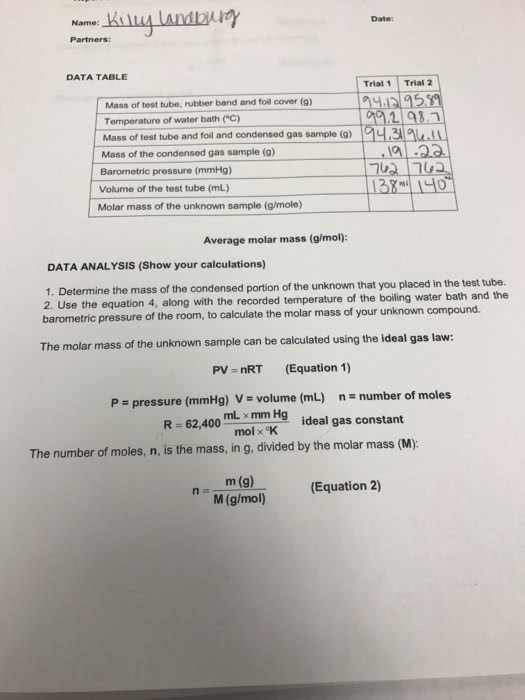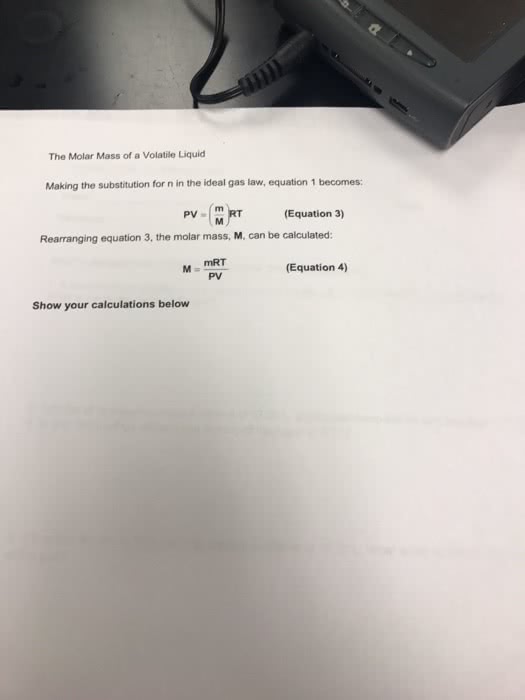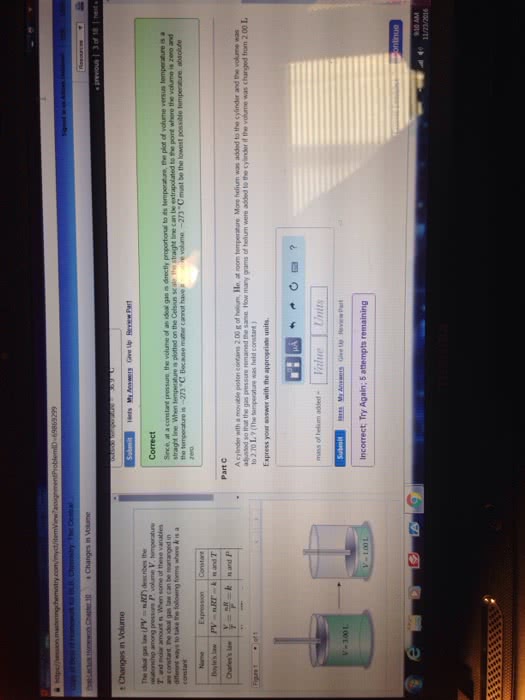CHEM 1113 Lecture Notes - Lecture 15: Partial Pressure, Mole Fraction, Ideal Gas Law
Document Summary
Answer: ideal gas law [pv=nrt] because number of moles is constant always. Molar mass & ideal gas law - molar mass in units is g/mol. Example problem: given -> volume of flask= 213ml, t= 100. 0degrees celsius, p= 754 torr, mass of flask + gas = 78. 834g, mass of flask = 77. 834g. Answer: find volume of flask in liters= 213l. Pv=(m/mm)rt ---> first multiply both sides by (mm/rt) ---> then divide both sides by volume ---> get d=(m/v)=(mm p)/(rt) Partial pressure is the pressure exerted by each individual gas in a mixture (partial pressure related to mole fraction) Mole fraction (x subscript a) = moles of a specific gas divided by total moles of the gas mixture. Dalton"s law of partial pressure- total pressure in a mixture is the sum of the partial pressures of the component gases [psubscripta=xsubscripta ptotal] When temperature of anything gets the pressure to match the atmospheric pressure -




